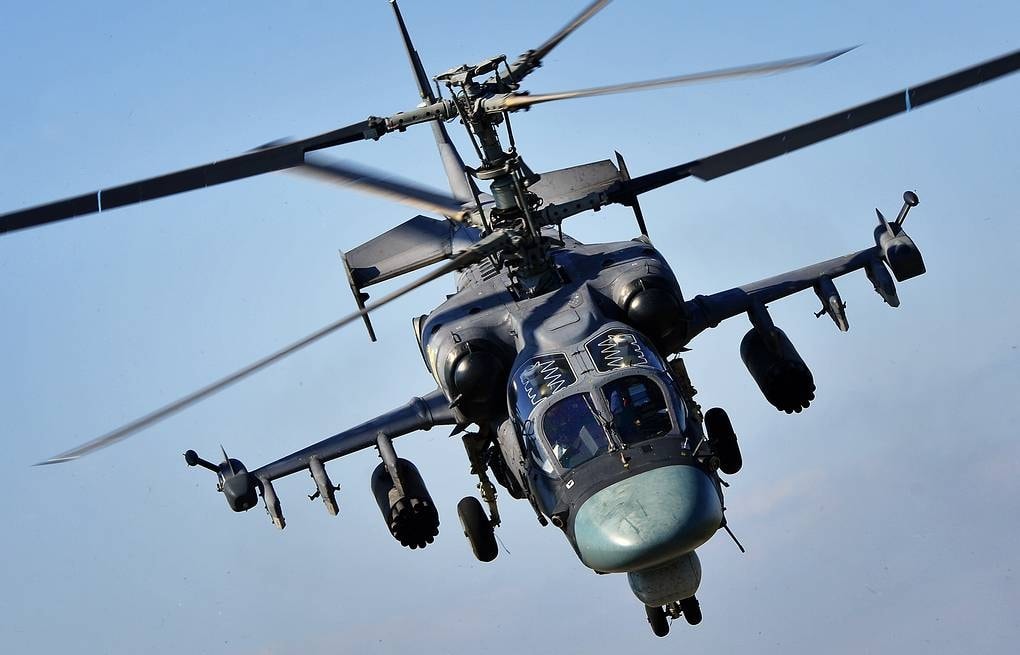Once considered an 'easy target', the Russian Federation's Ka-52 attack helicopter has now become the top threat to Ukraine with upgraded technology and optimized power.

As the Russia-Ukraine conflict enters its fourth year, a remarkable story of Russian air force adaptation and innovation has emerged, according to the military news site bulgarianmilitary.com on March 3.
At the IQPC 2025 International Military Helicopter Conference in London, Lieutenant Colonel Emiliano Pellegrini, a NATO expert on attack helicopters, called the Ka-52 Alligator Ukraine's "worst nightmare." This assessment not only reflects Russia's dramatic shift from passive to active, but also poses a difficult question for the West about the future of modern warfare.
As Mr. Pellegrini assessed, in the first year of the war (up to March 2023), Russia lost 59 helicopters (42 shot down, 17 destroyed on the ground), accounting for 30% of the initial force of 225 helicopters.
The Ka-52 suffered the heaviest losses (62%), followed by the Mi-24/35 (21%) and the Mi-28 (17%). The main reason was their outdated tactics: low flying, slow speed, and reliance on close-range fire, making them targets for man-portable air defense systems (MANPADS) such as the Ukrainian Stinger.
However, by the second year (as of March 2024), air losses had fallen by 52% to just 19 helicopters. Preliminary figures for the third year continued to show this decline, despite increased attacks on the base by Ukrainian unmanned aerial vehicles (UAVs).
“Russia has learned to use its helicopters more intelligently – distance is now its ally,” Pellegrini stressed. This transformation stems from Russia’s ability to adjust its tactics and increase its helicopter capabilities over the three years of conflict. According to Pellegrini, Russia has learned to use its helicopters better, through the adoption of new tactics and technological upgrades.
Ka-52 Alligator: The Soul of Transformation
As a symbol of this improvement, the Ka-52 Alligator is equipped with 2 Klimov VK-2500 engines (2,400 horsepower/engine), allowing it to reach a speed of 300 km/h and a range of 460 km. Its main weapons include a 30mm 2A42 cannon and 12 Vikhr anti-tank missiles with a range of 8 km, combined with a coaxial rotor design for greater mobility. However, the initial weakness lies in the long-range targeting system due to high vibration.
After the 2023 upgrade, the Ka-52 will be equipped with a new generation infrared camera, optimized navigation software, and the L370 Vitebsk jamming system, allowing missiles to be launched from a distance beyond the range of Ukrainian air defense forces.
"They no longer rush into the target like before, but stay out of range, using reconnaissance UAVs to locate them," analyzed Dr. Justin Bronk at the UK-based Royal United Services Institute (RUSI).
If the Ka-52 is the "spearhead", the Mi-28 Havoc plays the role of "right arm" with the ability to carry 16 Ataka/Vikhr missiles with a range of 10 km. The composite shell can withstand 20mm bullets and the advanced electronic system helps it operate effectively at night. After overcoming the MANPADS vulnerability by upgrading the automatic flare launching system, the Mi-28 has become much "harder to destroy".
Meanwhile, the Mi-24/35 Hind – an old Soviet-era “workhorse” – has been reborn thanks to the integration of a digital guidance system and the ability to coordinate with UAVs. Despite its bulky design, the Mi-24/35 Hind has proven its worth in both fire support and troop transport missions.
“The versatility of the Mi-24/35 Hind has allowed it to survive any war,” retired NATO Colonel Mark Schwartz, a helicopter expert, said in an interview with Defense News in March 2025.
Mr. Pellegrini pointed out that Russia's initial failure repeated the Soviet Union's mistake in Afghanistan: using helicopters as mobile artillery without support. Since 2023, Moscow has switched to "stand-off engagement" tactics: launching long-range missiles from an altitude of 4-5 km, combining Il-22PP electronic warfare aircraft to disable enemy radars, and using Orlan-10 UAVs for guidance. Thanks to that, the survival rate of pilots has increased significantly.
“Instead of going into battle, they are turning helicopters into ‘flying snipers,’” Oleksandr Pavlenko, a Ukrainian military analyst, said in a commentary in The Kyiv Post in March 2025, acknowledging their new threat. The Ukrainian General Staff report (March 2025) also showed that the performance of MANPADS like the Igla is down 60% compared to 2022.
The rise of Russian helicopters has forced Ukraine to rethink its air defense strategy. While Kiev previously relied on cheap MANPADS, it now needs medium-range systems like NASAMS or Patriot to counter them. However, the lack of Western weapons supplies makes this difficult to achieve.
For NATO, Russia’s success is a wake-up call. “Can NATO’s Apache or Tiger helicopters cope with the modern combat environment?” Mr. Pellegrini asked. Experience from Ukraine shows that integrating helicopters with UAVs and electronic warfare is a vital factor.
“This is a real test – Russia is rewriting its war doctrine,” warned Dr Katarzyna Zysk, a defence expert at the Norwegian Institute for Defence Studies.
In short, the improvement of Russian helicopters is not only a matter of technology, but also a reflection of the ability to learn from failure. However, the threat of suicide UAVs and precision rocket artillery from Ukraine remains a challenge. As Mr. Pellegrini concludes: “War is always a race between weapons and countermeasures – the side that adapts slower will pay the price.”